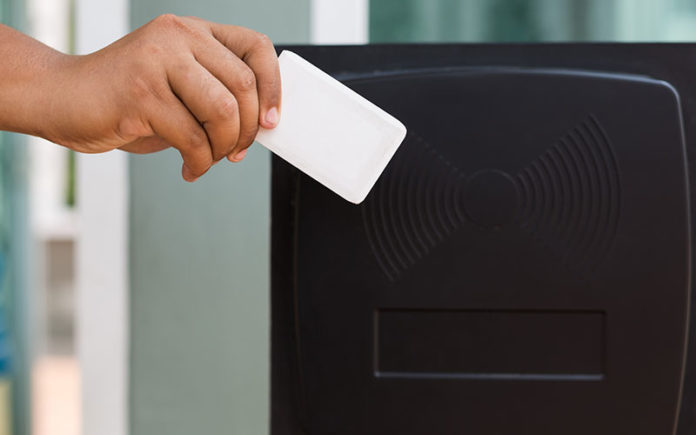
Sponsored by Advance Access.
How secure do you think your office building is? You lock the doors, and only employees and any other authorised personnel have keys – so you’ve got it covered, right?
Well, maybe not. If you have a lot of people coming and going, how can you know who is accessing what parts of the building when – and who could be slipping into places they shouldn’t, perhaps by “borrowing” someone else’s key, or slipping in just behind an unsuspecting employee as they unlock a door.
Standard keys are difficult to keep track of. If an employee lost theirs, would they tell you? Or would they just ask a colleague to get them one copied, meaning their original key could be found and used by anyone, without your knowledge? Even if they do ’fess up, you then have a tricky decision to make – do you choose the expensive option, and get your locks changed so you can issue all employees with new keys every time one gets lost? Or do you turn a blind eye and risk someone accessing the building who shouldn’t?
Perhaps even more of an issue than a lost key is an employee who leaves the organisation without returning their key. If a key is really lost, and not found by anyone, then of course it can’t be used to access the building. But if an employee leaves, whether they are fired, they quit, or their contract term is finished, and they don’t turn in their key, that key poses a threat to your security.
There is nothing to stop that employee, especially if you didn’t exactly part ways amicably, from selling the key, and details of the office location, to someone else, or even using the key to access and damage your company property.
So, your building may not be as safe as you think. But what if you could swap your standard keys for something smarter? Smart cards and proximity cards, as part of an access control system, can solve your key-related security issues. With each card assigned to a specific person, your system can keep records of which people have accessed which doors, and when. While it is sometimes possible to clone these types of cards, it is more difficult than just popping into a locksmith to get a key copied. It requires some serious specialist knowledge and equipment that your average thief just doesn’t have access to.
Your access control system can also solve the problem of lost keys, and keys that have disappeared with employees who have left. Because each card is specific to a user, specific cards can be disabled. So, if a card is lost, or an employee leaves, all you have to do is disable the missing card, so that the system no longer recognises it, and it can’t be used to access the building – you’ll never have to change the locks again!
While an access control system makes a security breach much less likely, that doesn’t mean it isn’t possible. However, with an access control system, you are much better equipped to deal with a break in or an emergency. With a standard key system, if someone does gain access to a part of the building they shouldn’t, they might set off an alarm. You rush up or down the stairs to find the door open, more than likely some expensive equipment missing… and the culprit already gone.
Or, imagine if you found yourself in an emergency situation, and the building needed to be locked down. How long would it take to secure the building with standard keys? Each door would need to be manually locked, taking up precious minutes that can make all the difference in an emergency. And with the shaky hands and frayed nerves of panic, it could take even longer. That’s why you need an access control system.
With a centralised system, you can view security footage of any breached doors, making it more likely that the authorities will be able to catch the culprit. And, in an emergency,you can quickly open or lock specific doors, or even lock down the entire building, with just a few clicks of your mouse.
Don’t risk your company security, or your employees’ safety. Give yourself peace of mind, and real security, by investing in an access control system.
Read more security content here.









